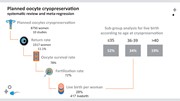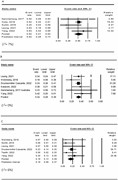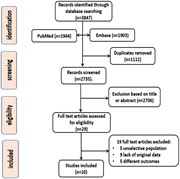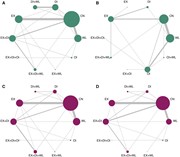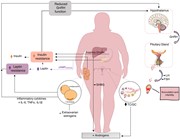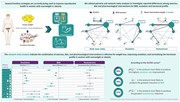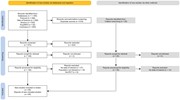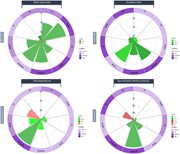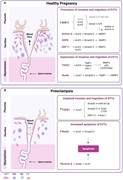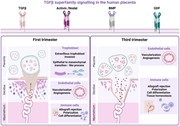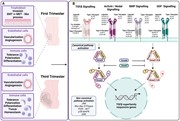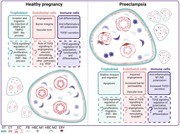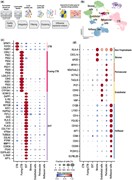Skip to results
Modify your search
NARROW
1-20 of 4466
Sort by
Image
Graphical abstract In meta-analysis, Planned Oocyte Cryopreservation yi...
Get access

in
Human Reproduction Update
>
Planned oocyte cryopreservation: a systematic review and meta-regression analysis
Published: 24 April 2024
Graphical abstract
Graphical abstract In meta-analysis, Planned Oocyte Cryopreservation yielded 28% live birth rate, strongly correlated with age at cryopreservation.
Image
Live birth rate per woman according to age at time of oocyte cryopreservati...
Get access

in
Human Reproduction Update
>
Planned oocyte cryopreservation: a systematic review and meta-regression analysis
Published: 24 April 2024
Figure 5.
Live birth rate per woman according to age at time of oocyte cryopreservation . ( A ) Age <35; ( B ) age 36–39; and ( C ), age >40.
Image
Study selection process.
Get access

in
Human Reproduction Update
>
Planned oocyte cryopreservation: a systematic review and meta-regression analysis
Published: 24 April 2024
Figure 1.
Study selection process.
Image
Post-thaw oocyte survival rate.
Get access

in
Human Reproduction Update
>
Planned oocyte cryopreservation: a systematic review and meta-regression analysis
Published: 24 April 2024
Figure 3.
Post-thaw oocyte survival rate.
Journal Article
Planned oocyte cryopreservation: a systematic review and meta-regression analysis
Get access

Ayala Hirsch and others
Human Reproduction Update, dmae009, https://doi.org/10.1093/humupd/dmae009
Published: 24 April 2024
Image
The proportion of women who returned to thaw oocytes.
Get access

in
Human Reproduction Update
>
Planned oocyte cryopreservation: a systematic review and meta-regression analysis
Published: 24 April 2024
Figure 2.
The proportion of women who returned to thaw oocytes.
Image
Cumulative live birth rate per woman (including multiple thaw cycles).
Get access

in
Human Reproduction Update
>
Planned oocyte cryopreservation: a systematic review and meta-regression analysis
Published: 24 April 2024
Figure 4.
Cumulative live birth rate per woman (including multiple thaw cycles).
Image
Network plots of available direct comparisons of outcomes when using differ...
in
Human Reproduction Update
>
Comparative efficacy of exercise, diet and/or pharmacological interventions on BMI, ovulation, and hormonal profile in reproductive-aged women with overweight or obesity: a systematic review and network meta-analysis
Published: 16 April 2024
Figure 2.
Network plots of available direct comparisons of outcomes when using different interventions. BMI change from baseline ( A ), ovulation ( B ), testosterone change from baseline ( C ), and SHBG change from baseline ( D ). The size of the nodes is proportional to the number of participants (i.e. samp
Image
Cumulative rank probability analysis on intervention outcomes. BMI change ...
in
Human Reproduction Update
>
Comparative efficacy of exercise, diet and/or pharmacological interventions on BMI, ovulation, and hormonal profile in reproductive-aged women with overweight or obesity: a systematic review and network meta-analysis
Published: 16 April 2024
Figure 4.
Cumulative rank probability analysis on intervention outcomes. BMI change from baseline ( A ), ovulation ( B ), testosterone change from baseline ( C ), and SHBG change from baseline ( D ). The number on the X -axis represents the rank. As the number goes up, the rating goes down. The number on th
Image
Mechanisms linking obesity with functional disruption of the hypothalamic–p...
in
Human Reproduction Update
>
Comparative efficacy of exercise, diet and/or pharmacological interventions on BMI, ovulation, and hormonal profile in reproductive-aged women with overweight or obesity: a systematic review and network meta-analysis
Published: 16 April 2024
Figure 5.
Mechanisms linking obesity with functional disruption of the hypothalamic–pituitary–ovarian axis. GC, granulosa cells; SHBG, sex hormone-binding globulin; TC, Theca cells; TNF-α, tumor necrosis factor alpha.
Journal Article
Comparative efficacy of exercise, diet and/or pharmacological interventions on BMI, ovulation, and hormonal profile in reproductive-aged women with overweight or obesity: a systematic review and network meta-analysis
David Ruiz-González and others
Human Reproduction Update, dmae008, https://doi.org/10.1093/humupd/dmae008
Published: 16 April 2024
Image
Graphical Abstract The combination of exercise, diet, and pharmacologi...
in
Human Reproduction Update
>
Comparative efficacy of exercise, diet and/or pharmacological interventions on BMI, ovulation, and hormonal profile in reproductive-aged women with overweight or obesity: a systematic review and network meta-analysis
Published: 16 April 2024
Graphical Abstract
Graphical Abstract The combination of exercise, diet, and pharmacological interventions is effective for weight loss, improving ovulation, and normalizing the androgen levels of women with overweight or obesity. RCT, randomized controlled trials; SUCRA, surface under the cumulative ranking cur
Image
PRISMA flowchart for the selection of studies in a systematic review and ne...
in
Human Reproduction Update
>
Comparative efficacy of exercise, diet and/or pharmacological interventions on BMI, ovulation, and hormonal profile in reproductive-aged women with overweight or obesity: a systematic review and network meta-analysis
Published: 16 April 2024
Figure 1.
PRISMA flowchart for the selection of studies in a systematic review and network meta-analysis on the comparative efficacy of exercise, diet and/or pharmacological interventions in reproductive-aged women with overweight or obesity .
Image
Polar plots for outcomes. BMI change from baseline, ovulation, testosteron...
in
Human Reproduction Update
>
Comparative efficacy of exercise, diet and/or pharmacological interventions on BMI, ovulation, and hormonal profile in reproductive-aged women with overweight or obesity: a systematic review and network meta-analysis
Published: 16 April 2024
Figure 3.
Polar plots for outcomes. BMI change from baseline, ovulation, testosterone change from baseline and SHBG change from baseline. The polar plots show the relative effects of each strategy and control groups. Colour indicates the relative performance of the intervention of interest and the precision
Journal Article
TGFβ signalling: a nexus between inflammation, placental health and preeclampsia throughout pregnancy
Monika Horvat Mercnik and others
Human Reproduction Update, dmae007, https://doi.org/10.1093/humupd/dmae007
Published: 22 March 2024
Image
Summary of the TGFβ family induced signalling in EVT. During placentation,...
in
Human Reproduction Update
>
TGFβ signalling: a nexus between inflammation, placental health and preeclampsia throughout pregnancy
Published: 22 March 2024
Figure 2.
Summary of the TGFβ family induced signalling in EVT. During placentation, the coordinated migration and invasion of EVTs is critical for the maintenance of a successful pregnancy. During the first trimester, CTs undergo an EMT-like process and differentiate into EVTs. These EVTs migrate and invade
Image
Graphical Abstract TGFβ signalling governs essential processes in place...
in
Human Reproduction Update
>
TGFβ signalling: a nexus between inflammation, placental health and preeclampsia throughout pregnancy
Published: 22 March 2024
Graphical Abstract
Graphical Abstract TGFβ signalling governs essential processes in placental development, coordinating trophoblast invasion, vascularization, immune tolerance, and tissue remodelling across cell types, to ensure a healthy pregnancy outcome.
Image
TGFβ signalling in the placenta. ( A ) TGFβ signalling in the first and th...
in
Human Reproduction Update
>
TGFβ signalling: a nexus between inflammation, placental health and preeclampsia throughout pregnancy
Published: 22 March 2024
Figure 1.
TGFβ signalling in the placenta. ( A ) TGFβ signalling in the first and third trimester placenta. TGFβ signalling is crucial for placental development and the functional regulation of placental cells. In trophoblasts, particularly during the first trimester, TGFβ signalling is involved in regulatin
Image
The unequal importance of TGFβ signalling in PE-compromised placental cells...
in
Human Reproduction Update
>
TGFβ signalling: a nexus between inflammation, placental health and preeclampsia throughout pregnancy
Published: 22 March 2024
Figure 3.
The unequal importance of TGFβ signalling in PE-compromised placental cells. The figure provides a cross-sectional representation of the placental villous structure, illustrating a comparison between a healthy (CTR) placenta and a preeclamptic (PE) placenta. The main placental cell types, including
Image
Results of integration of raw data from term human placentas . ( a ) Repres...
in
Human Reproduction Update
>
Revealing the molecular landscape of human placenta: a systematic review and meta-analysis of single-cell RNA sequencing studies
Published: 13 March 2024
Figure 6.
Results of integration of raw data from term human placentas . ( a ) Representation of the process for the integration. ( b ) UMAP of the integration. Dotplots of the genes identified using the comparison of already annotated datasets, the curation of markers genes, and integration for trophoblasts
Advertisement intended for healthcare professionals
Advertisement intended for healthcare professionals



